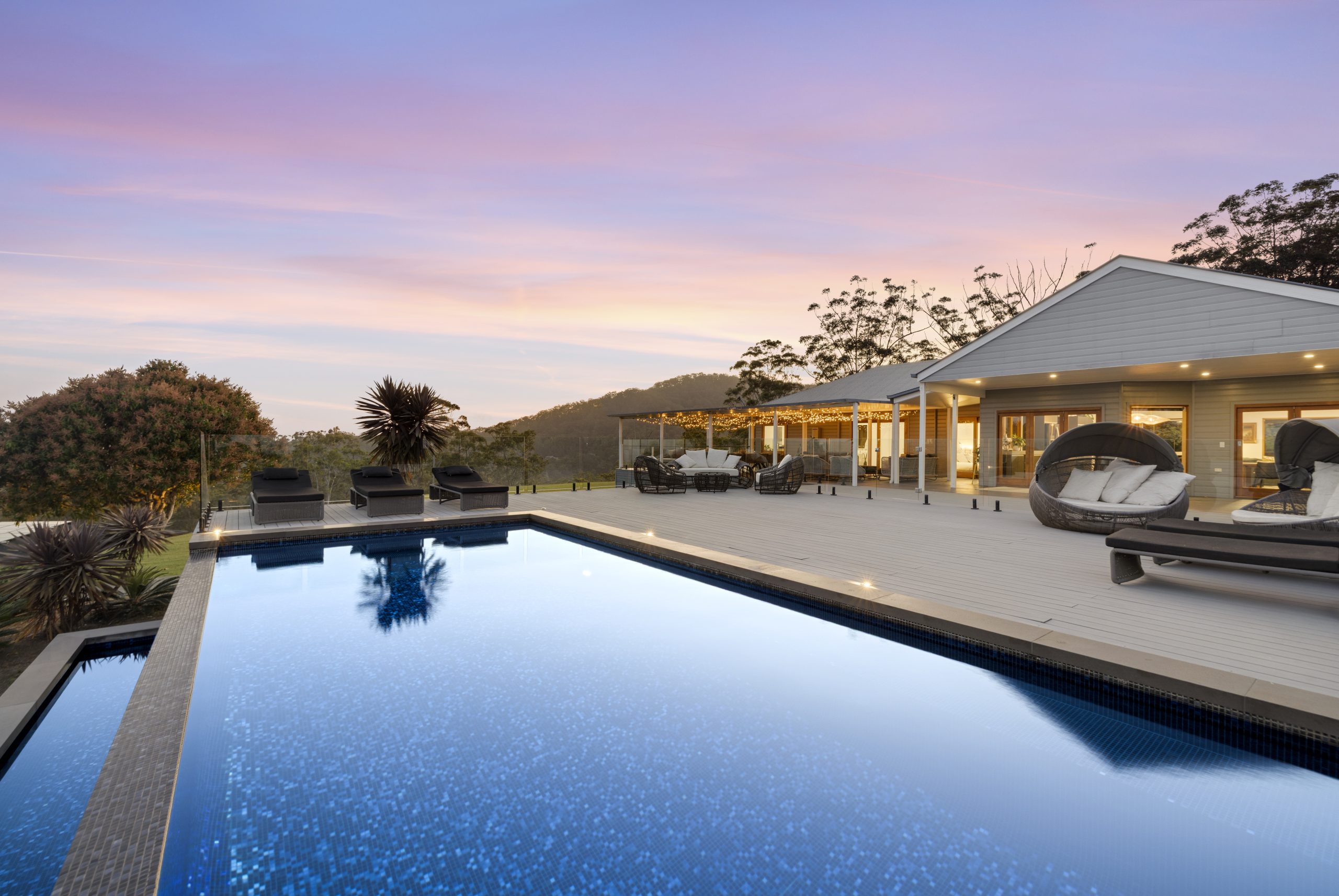Nobody Wants to Buy a Fixer-Upper Right Now
Homes that need extensive renovations are scaring off already cash-strapped buyers, real-estate agents say
They want to buy a house. They just don’t want to hire a contractor.
Real-estate agents say buyers right now seem in no mood to take on the additional costs and headaches of major renovation projects. There is no national data tracking how much quicker renovated homes sell than unrenovated ones, but there are signs of this change. It is one reason sellers are receiving an average of three offers now, compared with around six a year ago, according to the National Association of Realtors.
The drop in demand for unrenovated homes is mostly driven by high mortgage rates, buyers and their agents said. Fixer-uppers are always a risky proposition for buyers, but now they are more costly as the rates for home loans and construction loans have both increased, on top of high property prices.
This push higher in rates has widened the gap in sale time between turnkey and non-renovated properties, say agents. For sellers, this means a home in need of repair often sits on the market longer unless they attempt to do more work before listing.
The appetite for renovations is lower both for those shopping for their main property and second homes, say agents.
Tommy Byrd, 72 years old, looked at about a dozen unrenovated homes in his hunt for a vacation house in Santa Rosa Beach, Fla. He recently decided to limit his search to only renovated homes as he doesn’t want to manage the renovation from another state.
“I’d prefer to purchase a turnkey property,” he said.
Sellers can also no longer count on a frenzy of offers from buyers willing to waive inspections on properties in need of repairs, said Lawrence Yun, National Association of Realtors chief economist. In New York City, fixer-uppers are generally sitting on the market for longer, said Benjamin Dixon, a real-estate agent there.
This means buyers can usually be choosier about homes that need upgrades, such as new hardwood floors, kitchens, bathrooms or even a fresh coat of paint, Yun said.
When Bob Evans, 66, put his two-bedroom Guilford, Conn., condominium on the market last spring, he figured a couple looking for a starter home would look past the dated décor and jump at the roughly $200,000 asking price.
In the five months or so it was on the market, about 60 people toured the 1,400-square-foot home that had carpeting and dark wood kitchen cabinets. Not one made an offer.
“They just couldn’t get past the ’80s-style décor, I guess,” he said.
Evans is spending about $20,000 to remodel the unit himself, gradually making upgrades such as removing the carpet to show the original wood floors. He plans to relist the condo later this year for about $250,000.
Anything that sits on the market for more than a month is usually either overpriced or in need of significant repairs or updates, said Taylor Marr, Redfin’s deputy chief economist. Homes stay on the market for a median of 27 days, up from 19 days a year ago, according to Redfin.
“Most home buyers right now simply don’t have enough money left over to invest in major repairs or remodelling,” said Marr.
Meg Jordan, 32, and her husband, Rob Boll, 34, initially thought they’d buy a fixer-upper. Starting last fall, they looked at nearly 30 homes, six of which needed complete remodelling.
They started to get second thoughts about buying a home that needed significant renovation as they were worried about surprise work, rising costs and higher interest rates.
The couple is in contract on a roughly $1.8 million home in East Hampton, N.Y., and are set to close in a few weeks. Before move-in, the house is getting a fresh coat of interior paint and then they plan to enjoy their first summer as homeowners near the beach.
“We’ll paint it, move in, and enjoy it,” said Jordan.
The decline in home buyers wishing to renovate hasn’t put a dent in overall spending on remodelling. In fact, the market for homeowner improvement and repair projects in the U.S. is projected to reach $484 billion in 2023, up from $471 billion last year and $328 billion in 2019, according to Harvard University’s Joint Center for Housing Studies.
The people willing to take on these projects are often existing homeowners who want to upgrade their house without giving up their ultra low mortgage interest rate, real-estate agents and economists said.
In some real-estate markets, so few homes are for sale that buyers may have little choice but to purchase one that needs work, real-estate agents said. In other areas, bidding wars remain common and buyers can still get top dollar for unrenovated houses—it just may take longer.
“Even homes that need renovations are still selling near list price or slightly higher simply because there aren’t enough homes on the market to meet demand,” said Brian Slater, a Realtor in Phoenixville, Pa.
 Copyright 2020, Dow Jones & Company, Inc. All Rights Reserved Worldwide. LEARN MORE
Copyright 2020, Dow Jones & Company, Inc. All Rights Reserved Worldwide. LEARN MORE
Pure Amazon has begun journeys deep into Peru’s Pacaya-Samiria National Reserve, combining contemporary design, Indigenous craftsmanship and intimate wildlife encounters in one of the richest ecosystems on Earth.
Australia’s housing market defies forecasts as prices surge past pandemic-era benchmarks.
First-home incentives can still form part of a long-term investment plan if used strategically.
Australia’s home prices continue to grow, and while that makes them great investments, they are also some of the most unaffordable in the world.
That’s why first-home buyer schemes such as the First Home Owner Grant, the First Home Guarantee, and stamp duty concessions have become so valuable.
These programs are designed to reduce upfront costs and fast-track people into homeownership.
But the question many aspiring investors are now asking is can these schemes be used as part of an investment strategy? These government initiatives aren’t designed for investors, but they can still play a key role in your long-term investment journey if used strategically.
What the schemes actually allow
Every first-home buyer incentive in Australia is created to support owner-occupiers, not investors.
Whether it’s a cash grant, reduced deposit requirement, or a stamp duty discount, the catch is always the same in that you must live in the property for a set period of time. For example, the First Home Owner Grant often requires you to live in the property for at least six to twelve months, depending on the state.
The First Home Guarantee allows you to purchase with just a 5 per cent deposit without paying lenders’ mortgage insurance, but again, you’re required to live in the property for at least one year.
Likewise, state-based stamp duty concessions are only available for properties intended as a principal place of residence. If your intention from the outset is to buy a property solely for rental income, you won’t be eligible. However, if you’re open to living in the property initially, then transitioning it into an investment, there’s a path forward.
A strategy that works
Rentvesting has emerged as one of the most practical ways for first-time buyers to take advantage of these schemes while also laying the groundwork for a property portfolio.
The concept is simply, buying a property in an area you can afford (using the first-home buyer schemes to assist), live in it for the minimum required period, and then rent it out after fulfilling the occupancy condition.
This approach lets you legally access the benefits of first-home buyer schemes while building equity and entering the market sooner. Instead of waiting years to save a full 20 per cent deposit for an investment property, or getting priced out altogether, you get your foot in the door with reduced upfront costs.
Once you’ve satisfied the live-in requirement, the property can become an income-generating asset and even serve as collateral for your next purchase.
What to look for in a rentvestment property
If you plan to eventually convert the property into an investment, you need to think beyond your short-term living experience. It’s essential to buy a property that performs well both as a home and as a long-term asset.
That means looking at key fundamentals like location, rental demand, and growth potential. Suburbs with strong infrastructure, access to employment hubs, good transport links, and low vacancy rates should be high on your list.
A balanced price-to-rent ratio will help ensure manageable holding costs once the property transitions to an investment.
Established low-density areas often outperform high-rise apartment developments that flood the market with supply and limit capital growth. And ideally, your property should offer scope for future improvements, whether that’s a cosmetic renovation, granny flat addition, or potential to subdivide down the track.
Mistakes to avoid
There are a few common missteps that can undermine this strategy. The first is selling too soon. Some grants and stamp duty concessions include clawback provisions if you offload the property within a short period, which could see you lose the benefits or even owe money back.
It’s also a mistake to let the lure of a government handout sway your purchasing decision. A $10,000 grant doesn’t justify compromising on location, growth prospects, or property fundamentals.
Another pitfall is failing to consider the financial impact once the property becomes an investment. Repayments, tax treatment, and outgoings may change, so it’s important to stress-test your position from day one.
Lastly, beware of buying into oversupplied areas simply because they’re marketed to first-home buyers. Not all new builds are good investments. If hundreds of identical properties are being built nearby, your long-term growth could be seriously limited.
With the right approach, your first home can be the foundation for an entire property portfolio. It starts with using available government support to lower your entry cost.
From there, you occupy the property for the required time, convert it to an investment, and leverage the equity and rental income to fund your next purchase.
Many of the most successful investors today began with a single, strategically chosen property purchased using these exact schemes. By buying well, you can turn your first home into the launchpad for long-term wealth.
Abdullah Nouh is the Founder of Mecca Property Group (MPG), a buyers’ advisory firm specialising in investment opportunities in residential and commercial real estate. In recent years, his team has acquired over $300 million worth of assets for 250+ clients across Australia.
A bold new era for Australian luxury: MAISON de SABRÉ launches The Palais, a flagship handbag eight years in the making.
An opulent Ryde home, packed with cinema, pool, sauna and more, is hitting the auction block with a $1 reserve.
























